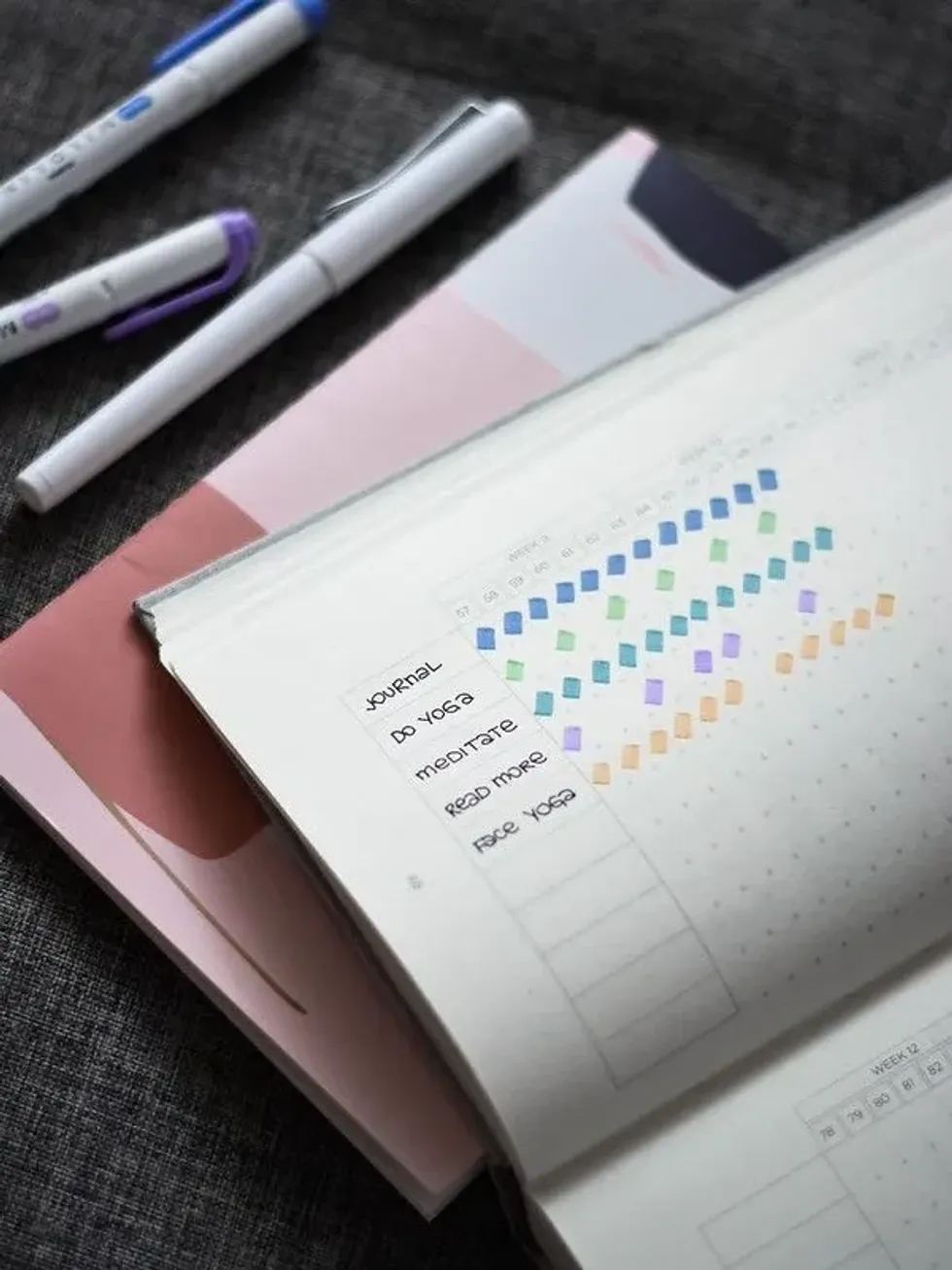In a world that keeps us always 'on,' teens particularly feel the pressure of social expectations, hormonal changes, and academic demands. Mindfulness offers a sanctuary of calm in their bustling lives.
Now's the chance to guide them through mindfulness exercises that can transform stress into serenity. Whether it's taking deep breaths, enjoying nature, or finding joy in the small things, these practices can promote presence and engagement.
Let's empower our teens to embrace a more centered, peaceful state of mind, beneficial for everyone in the family.
If you aren't familiar with practising mindfulness, then the following tips can be easily applied to yourself too!
Breathing Exercises
Being aware of your breath is a key way to bring a swift sense of calm, and distance yourself from anxious feelings, so you are able to look at a situation objectively rather than act quickly as a reaction to stress.
A simple breathing exercise to start with is just to take an 'exaggerated breath', inhale deeply through your nostrils for 3 seconds, hold for 2 seconds, then exhale slowly through your mouth for 4 seconds.
Try to observe each breath and really focus on the rise and fall of your chest and how it feels to breathe deeply.
You can do this for as long as you like, throughout the day, or try to set aside some time once a day to just sit and breath like this, if your mind wanders that's natural but once you notice, just gently bring your attention back to your breath.
This is an excellent technique for everyone to learn, but teaching mindful breathing to your kids from a young age will really help moving forward with increased concentration, and the ability to find calm when they experience stressful situations or intense emotions.
Take a look at this article for full instructions.
Triangle Breathing
In line with the technique above, here is a video that makes that even easier, and would be a great place to start with your teen.
It is simply a calming shape, as it grows you breath in, and as it shrinks back down you exhale, the video is ten minutes long, which is a perfect amount of time to practise mindful breathing.
However with mindfulness, even a small amount is better than nothing at all so even just a minute or two to focus solely on your breath in time to this shape, will help to reinstate calm.
10 Mindful Minutes
Introduce your teen to the practice of mindfulness with an engaging expert's insights. Together, explore simple exercises and firsthand accounts that highlight meditation's impactful benefits for a balanced and fulfilling everyday life.
Podcasts
Mindfulness is super popular at the moment, as are podcasts, so it is no surprise that there are a lot out there covering this topic! Podcasts, in general, are a great way to take some time out and relax, Check online for podcasts with a focus on mindfulness that you could listen to with your teen, or recommend to them.
Apps
Delve into mindfulness with accessible apps that cater to every schedule. Whether you're integrating brief moments of calm or extended meditative sessions into your day, you can find the tools that fit best.
These apps offer personalized experiences, aligning with your preferred pace and lifestyle, and are available for various devices to support your mindfulness journey.

Digital Detox
It might be slightly ironic after talking about podcasts and meditation apps to now suggest putting the tech away, but this really is an excellent way to reconfigure the mind after it's been buzzing with info all day long.
Let's be real, with Snapchat, Tik Tok, Instagram and whatever the next big thing is, teens LIVE inside their phones!
A digital detox is an excellent activity to do as a family, otherwise, this could easily seem like a punishment. Your teenager could be feeling extra attached to their devices at the moment as their only window to their social lives; even just an hour or two a day will make a huge difference.
The best time is an hour before bed and then not until the morning but that may be a long shot!
Take a look at this post for some great advice on how to switch off as a team, and some of the amazing benefits.
Positive Affirmations
Using affirmations is a great way to encourage your teenager to be kind to themselves, and to boost self-confidence which can often suffer throughout the teenage years. Positive affirmations are simply positive thoughts and statements that we repeatedly tell ourselves in order to create a habit of positive thinking.
Using affirmations is using the power of positive thought- they work to create that powerful good energy that can lead to positive outcomes- much like manifesting.
Affirmations seem to work best at the beginning and end of each day, in the morning to set yourself up for a positive day, and before bed to end the day on a good note. For some inspiration and ideas check out this post.
Visualisation
Visualisation is similar to daydreaming, it is accomplished through the use of your imagination. Quite simply, it is training your mind to allow you to leave a stressful situation by picturing yourself somewhere else!
Visualisation is an amazing mindfulness tool, and a great way to gently bring your thoughts away from worries and panic, take a moment to focus on your breathing and imagine a tranquil setting.
This will send a message to your brain to calm down too- the more you practise the more efficient this tactic becomes! For more tips on visualisation take a look here.
Body Scan Meditation
This is an easy daily mindfulness tool to learn together.
Research has shown that one of the primary benefits of this type of meditation is stress relief, great news. A lot of people are reporting changes to their sleep patterns at the moment, as a result of routines being totally thrown off- and teens especially like to stay up until the early hours!
So this is a good way to make sure the sleep they DO get, is high quality, encourage them to practise a body scan meditation before they drop off- but after they've put their phone down for the night- it should be the very last thing they do.
Here is how; simply lay or sit comfortably and close your eyes.
Take a few deep breaths and bring your awareness to your feet, and move your way up scanning your whole body, really feeling every muscle and even wiggling your fingers as you go along to bring your awareness to each body part. As you work your way up, observe any tensions and visualise them leaving your body.
Remember to breathe deeply as you go along, and when you reach the top of your head, imagine all the tension disappearing.
Yoga
This is another amazing way to practise mindfulness, focusing on your breathing and experiencing the moment are all part of yoga and it is a great way to spend a relaxing time with your kids.
If you are beginners you can grow your practise together, you could incorporate this into your daily routine, a great place to start is with Yoga with Adrienne.
There are a huge variety of videos to choose from including this one, which is tailored especially for teens, they also have loads of different videos for all different abilities.
Grounding
When things are feeling a little crazy, 'grounding' is a practise taught by therapists, often for dealing with anxiety but no matter what you are feeling, this mindfulness technique will help bring you back into the present moment.
Take a look at this page to read about a few different grounding techniques, one that we really like is called the 5-4-3-2-1 technique.
This technique helps you to hone in on your surroundings, so to start you can take some deep breathes (in through your nose, count to 3, out through your mouth to the count of 3), then you simply list- 5 things you can see, 4 things you can feel, 3 things you can hear, 2 things you can smell and finally 1 thing you can taste.
This simple technique can help with anxious energy by literally grounding and calming it so that stress can be released and you can focus again, in the here and now.
Gratitude Journal
Now more than ever, it feels really important to take note of what we are thankful for, and keeping a gratitude journal is a wonderful way for teenagers and/or the whole family, to appreciate how lucky we are.
Sometimes it is hard to feel positive, it is natural to feel a little low after watching the news or reading another statistic online- but every day does have its good moments, and taking time to reflect and jot them down will reset your perspective.
It is a great habit to get into and being appreciative can help draw more good things into your life! Making a gratitude journal together could also be a fun activity, and reflecting on the things you are grateful for together will allow you to pay attention to what means the most to each of you.
Here are some great tips to help you get started with making your own journal.
Give Yourself a Hug
In this time of social distancing, this one is more important than ever! When we are hugged by someone we love, our bodies produce dopamine and oxytocin which are major feel-good hormones and something we could all do with producing more of at the moment!
So amazingly, your neurons don't actually know it's you, so when you give yourself a big squeeze they activate and spark off this amazing chemical reaction, making us feel safe and cared for.
Fresh Air
In times like these, it is more important than ever to make the most of simply getting outdoors, or if that is not an option, bring the fresh air to you by throwing open the windows for a little while every day and just breath it in.
If your teen is spending a lot of time indoors, either studying or just keeping to themselves, it is really important to make sure they are getting a daily dose of vitamin D and a chance to refresh.
This is one of the most simple mindfulness practises you can do and can help a lot with mental health.









